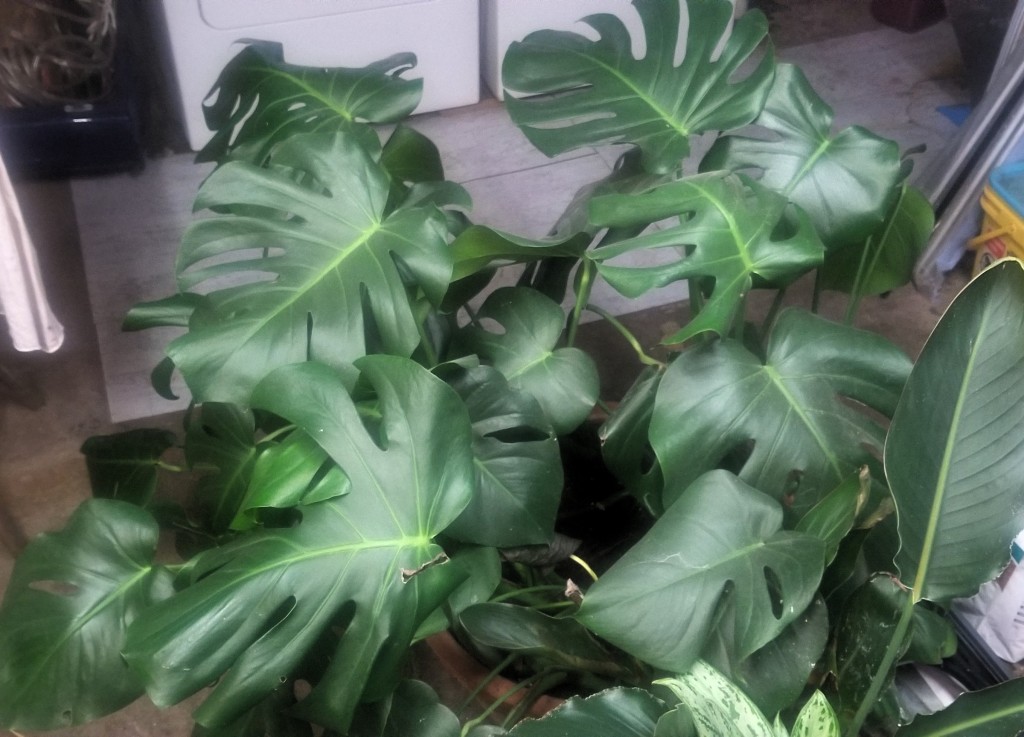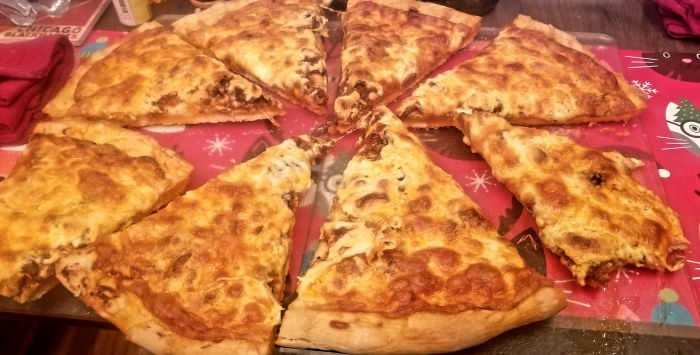Does this happen to you?
I have a habit, good or bad, of seeing a post or a photo or a commercial and getting an idea stuck in my head. Some are fairly simple and straightforward. Others are, to put it simply, seriously over the top (like attaching a ladder to the ceiling for hanging plants). Regardless, the idea sticks and grows and won’t go away until you do something with it. That happened to me the other week thanks to a post in an organic gardening group.


For some time now, as we expanded the items we want to grow, especially medicinal herbs and for more authentic, ethnic fare, it’s become a struggle to decide where to put what. Do I stop growing some items in favor of others? Do I expand to new places in the front yard, which, unfortunately, is not as fertile as the back? Do I expand my container gardening, perhaps experimenting with different items to see if I can grow the same amount with a smaller foot print?
So, what did I do? Well, actually, I said yes to all three questions and added “found” space. Most of which was unplanned.
An answer to the first question was the only one addressed last year when I laid out the garden using our predetermined scheme. As I’ve mentioned in previous pieces, we created five groups of three families of vegetables to spread across our fifteen beds, which gave us a pre-planned five-year crop rotation system. The vertical growing beds went on a four-year plan. Everything was already set.
And then…
If I am a creature of any habit, it’s this: I’m going to upset my own meticulously thought-out plans with new ideas to make things better (one hopes).
Some of you might call this “not leaving well enough alone.” But I guess I’m just not all that ready to settle into a routine that never evolves. As I noted in my last post, my godmother once asked if I ever slowed down. Now that I’m almost back to 100%, I have to say the answer is simply, “No.”
Tweaking happens.
To start, in response to the first question, I had already stopped growing peas in favor of making room for winter squash and more sugar pumpkins. I wasn’t having much luck with peas despite trying several varieties over several years, and I’m the only one who eats them. It was a no-brainer to swap them out. If I absolutely need peas for a dish, frozen ones are not expensive. Forgoing peas also allowed us to switch out a couple varieties of bush beans for pole beans. This opened up space for Mexican herbs and Japanese greens and cabbages.
Second, I wanted to see if we could grow our own cumin. We already grow fennel in containers for seed because we use a lot. With our love of Tex-Mex (or at least mine), we go through a lot of cumin as well. Growing enough plants to get a sufficient amount of those tiny seeds requires considerable space. I wasn’t happy giving up most of a garden bed. So, last week, after that post got me thinking, I decided to use them as a border for the front walkway, a space we hadn’t tried growing anything in before and actually hadn’t planned out yet. We’re also relocating our shade garden plants, given there isn’t so much shade left after removing a couple of trees, and using that space for Jack O’Lantern pumpkins and bell peppers this year.
Third, items which will eventually become the understory of our burgeoning food forest, will go into containers which have sat unused for a couple of seasons. I also have ginger that sprouted in the pantry and is currently in water, growing roots in the greenhouse. Being a tropical, this will become a container plant so we can bring it in during the winter. We already have two pineapples I hope throw fruit this year. As for experimenting, I’m going to try potatoes in five-gallon buckets. Lay the seed spud on two inches of soil and fill to six inches, then continue adding soil as it grows until the bucket is full. If the idea works, I won’t have to dig to harvest; simply dump the bucket out.
The post, which triggered my thinking of restructuring in the first place, featured keyhole beds. This design is composed of two rectangular beds joined at the back, and having enough space in the center for you to get in to work them: the keyhole. Picture a big, thick, blocky C. If I were to convert fourteen of the fifteen beds (it has to be an even number), I would gain additional square footage equal to one and three-quarters of our eight-by-four-foot beds. This would solve our problems. At least until our constant add-ons exceeded that space. In the meantime, we’ll gain a few years and be able to focus more on building the front yard orchard/food forest.



We already needed to move beds one and two forward as they were too close to the vertical growing bed. We hadn’t planned on doing so this year. But, to try the keyhole design out, we shifted and converted them. If it’s manageable to maneuver around the extended design, we’ll convert the rest of the beds at the end of the year. So as not to upset my painstaking crop rotation scheme, I’ll treat the new sections as though they were separate mini-beds for the herbs and leafy vegetables with their own rotation.
Note: I did try reworking the over-arching schedule, regrouping and rearranging the placement of items. No bueno. I don’t need to reinvent that wheel. Mini-beds it will be. Keeping it to greens and herbs will remove any worries about cross-pollination, because I already worked those out in the current scheme.
As if to tell me this was a good plan, the universe dropped me a gift. On the way home from the gym, I came across tree cutters; your typical, independent guys rather than a large, landscaping company. I stopped and asked what they did with the wood chips. In short, I have a few more logs for the fire pit and about five yards of fresh wood chips to use as mulch in the walkways around the rebuilt beds as well as the strawberry patch, etc. This was something I’d been considering. I’m signed up with a service to bring me chips, but have been waiting and waiting and waiting. Then I find these fellows just as I was thinking I should redesign the beds. I’ll take that as a sign. The service suggests tipping the arborist $20. When I held out the bill for the guys the other day, he said, “For real?”




They would have been happy just getting rid of them rather than paying a landfill to take them. Given this would have cost me over $200 for material and delivery, this was a win-win. Including for my neighbor, who assumed they were trash being at the back of my lot, and helped himself to most of the logs and about half a yard of the chips before I caught him. I would have said yes had he asked; he’s a nice enough guy. But he is, as they say, not the sharpest tool in the shed, so it’s hard to be angry with him.
Anyway, I figured when I needed more wood chips, the tree cutters would be happy to bring me some without having to wait and wait and wait. As it turned out, he surprised me one day with an even bigger load and was happy enough just to give them to me.


And I’ve got more work to do…
































































